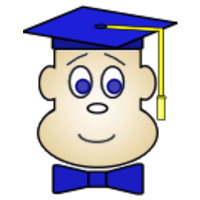Back to Back
Pro Problems > Math > Number and Quantity > Number Theory > DigitsBack to Back
X is a three-digit number. Y is the number obtained when the digits of X are reversed. Z is the six-digit number obtained by writing X and Y back to back, with X written first. W is the six-digit number obtained by writing Y and X back to back, with Y written first. What is the largest number which the sum of Z and W must be divisible by?
Solution
In order to make it feasible for teachers to use these problems in their classwork, no solutions are publicly visible, so students cannot simply look up the answers. If you would like to view the solutions to these problems, you must have a Virtual Classroom subscription.Similar Problems
Two Digit Pattern Matching
How many two-digit numbers are there such that the digits match at least one of the following patterns:
- The digits are both multiples of three.
- Neither of the digits are multiples of two.
- The digits add to 8.
- The digits are perfect squares.
Sum of Digits
Find the sum of all the integers between one and 100 which have 14 as the sum of their digits.
Five Digit Number
The sum of the digits of a three digit number is eighteen. The first digit is three more than the last digit. There is a repeated digit in the number. What are all possible values of the number?
Three Digit Number
I am thinking of a three-digit number. The sum of my digits is 17. Two of my digits add to 10, and two of my digits are the same. Find all possible values for my number.
Digits in a Multiplication Problem
You must use each of the integers from 0 to 5 exactly once to fill in the blanks in the multiplication problem below.
_ _ _ x _ _ x _ =
What is the largest possible value you can create?
Three Digits, sum and product
I'm a three digit number. My first two digits multiply to 12, and my last two digits add to 14. What number am I?
Grapes on the Vine
The number of grapes on my grape vine is a three digit number. It is 7 times as much as the number of grapes on the vine last year, and 11 times the number of grapes on the vine the previous year. Next year, if I have twice as many grapes as I do this year, the number of grapes will still be a three digit number, but if I have three times as many grapes, the number of grapes will be a four digit number. If I have 21 times as many grapes, the number of grapes will be a five digit number.
If each jar of grape juice requires 20 grapes, how many full jars of grape juice can I make this year?
Fiona's Telephone Number
When Shrek asks Fiona for her telephone number, Fiona is a bit coy about it, and tells Shrek the following information:
- My telephone number has 10 digits.
- There are no repeated digits in my telephone number.
- The first three digits are in ascending order.
- The second three digits are in descending order.
- Both the last four digits and the last two digits are multiples of sixty.
- My last four digits are not a multiple of 43.
- My first three digits are the square of an integer less than twenty.
- The sum of the second three digits is 14.
What number should Shrek dial?
Happy New Year
Happy New Year! I am a four-digit year, and my last two digits are a perfect square. The sum of my first and third digits is a perfect square. My second digit is a perfect square. All my digits add to a perfect square.
If you subtract my first, second, and third digit from my last digit, you get a perfect square.
If you subtract my third digit from my first digit, you get a perfect square.
Oh, by the way, I'm a perfect square.
What year am I?
Fill in the blanks
In the addition problem below, some digits are missing. They have been replaced by x and y. Find the values of x and y.
3xy2 + 3y1 = 40x3

